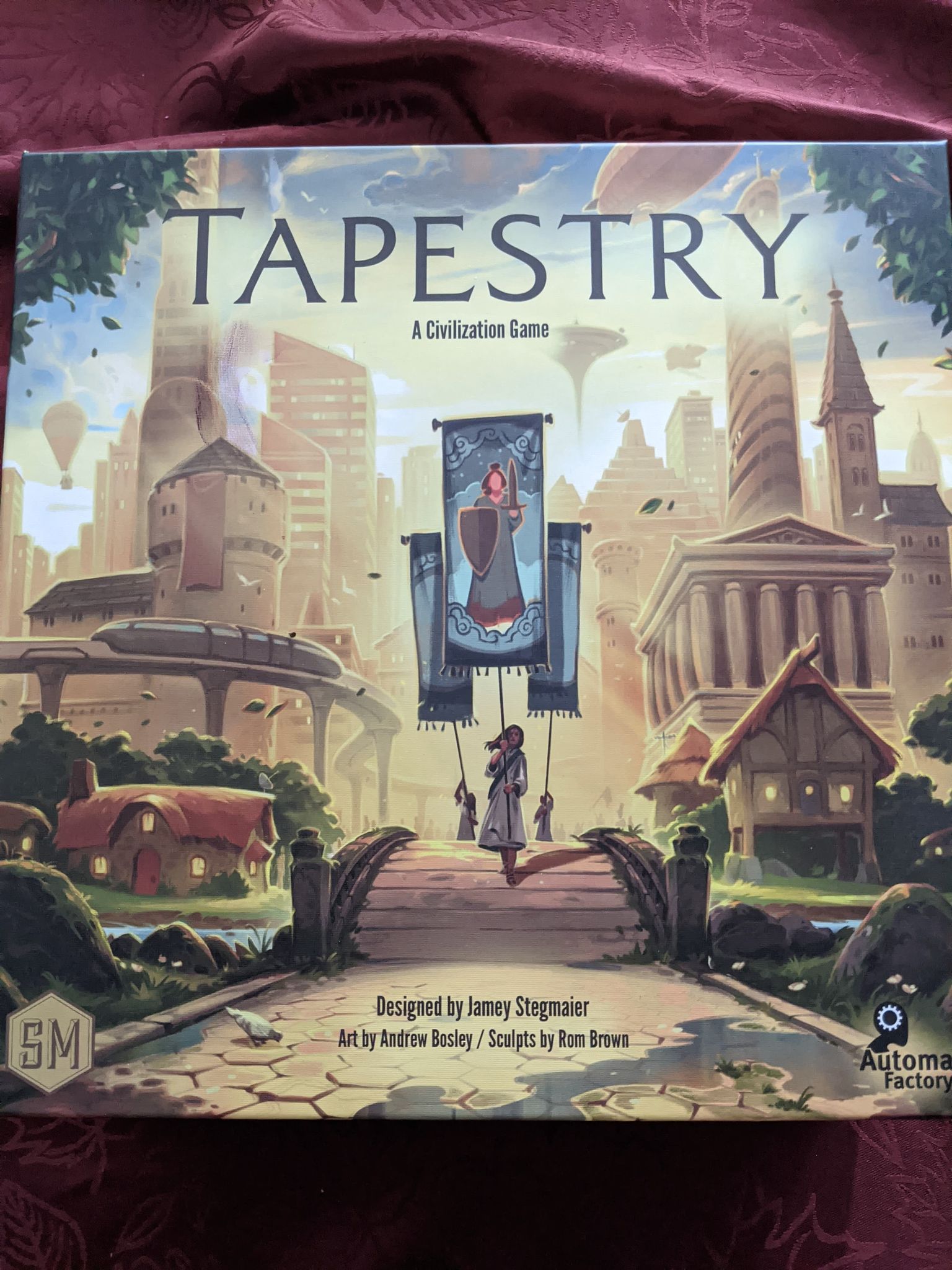Once again diving into a Stonemaier Games property, my gaming group readied ourselves for a great experience. Having just played the straightforward Between Two Castles and constantly gushing over the greatness of Wingspan, my playgroup excitedly attempted to dive in with our next Stonemaier adventure. This time we wouldn’t be feeding birds or building rooms to a castle, but instead helming the progress to an entire civilization. This game, my friends, is Tapestry.
Tapestry, a game I initially thought would be about putting quilts together, or some other similarly innocuous task, is actually about building a settlement from creating fire all the way to space exploration. Sound familiar? Maybe its because you’ve played one of the many Civilization games from Sid Meier(not to be confused with Stone Maier).
In some respects the game plays similarly to Civilization as well, albeit in an analog format. Let me say very clearly: There are a lot of moving parts to consider. So let’s talk about it.
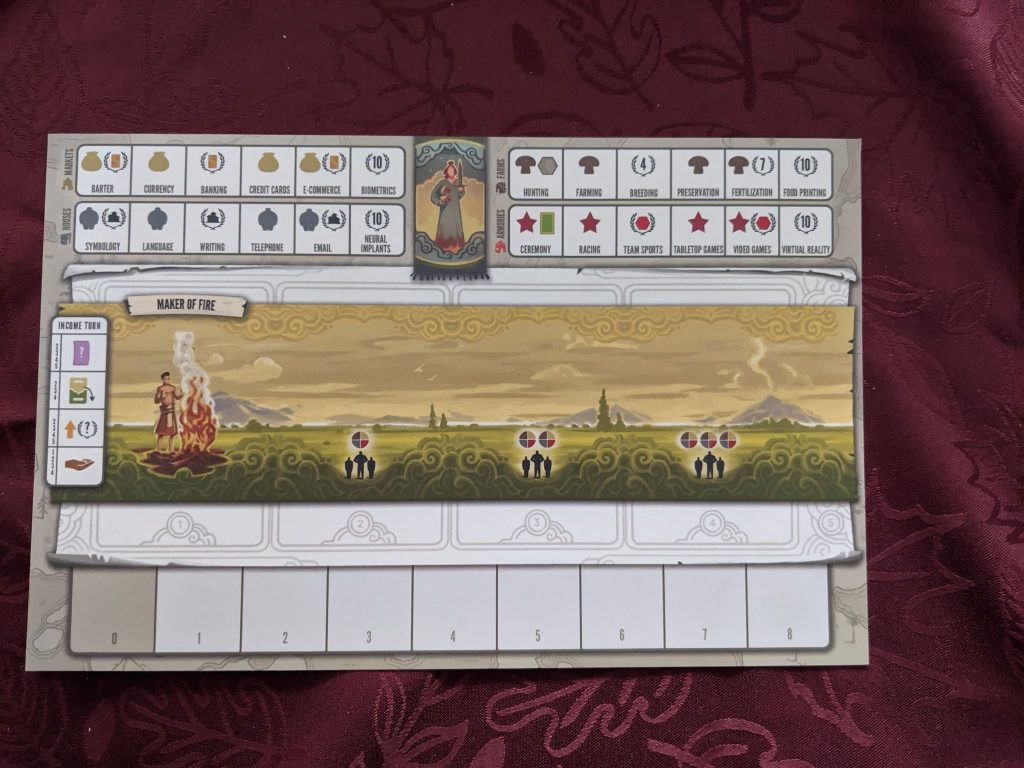
First we have the tapestry track. The tapestry track will identify each era of the game, beginning with creation of fire. From there you may advance your era up to five times. Once you hit the fifth, your time in the game is over. I say your time in the game is over, because others may still be in their 3rd era. You choose when to move forward and there is limited time to make yourself the premier society on Earth, so use these wisely. You’ll use tapestry cards over the applicable slots to advance your era and it should be said, some tapestry cards are absolutely bonkers good while other are much less appealing.
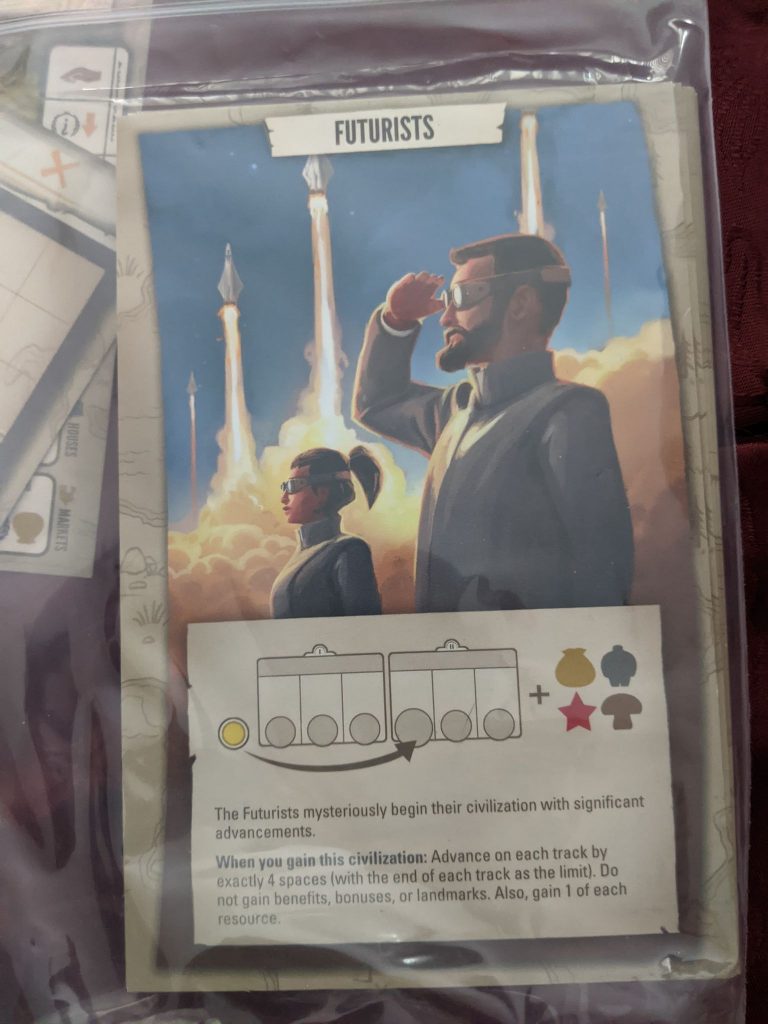
We also have the Civilization you’ll be piloting. Naturally, each civilization has unique abilities to offer you game. Some of them work only at the beginning, other may be activated frequently during the game.
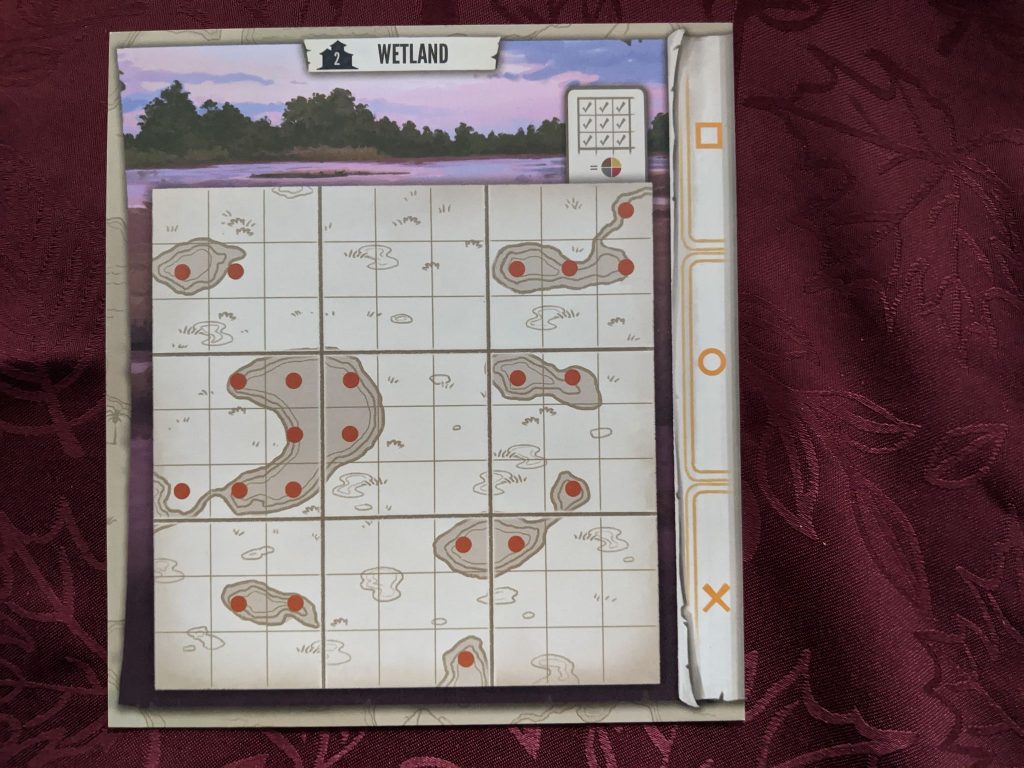
Next we have the environment you build your civilization in. These can be forests, wetlands, deserts, mountains, etc. On this track, you’ll place buildings in what appears to be a math-less Sudoku board. You’ll strategically align buildings to cover areas. If you fill a 3×3 square, you’ll get a resource. If you fill a straight line in any direction, you’ll nab a victory point.
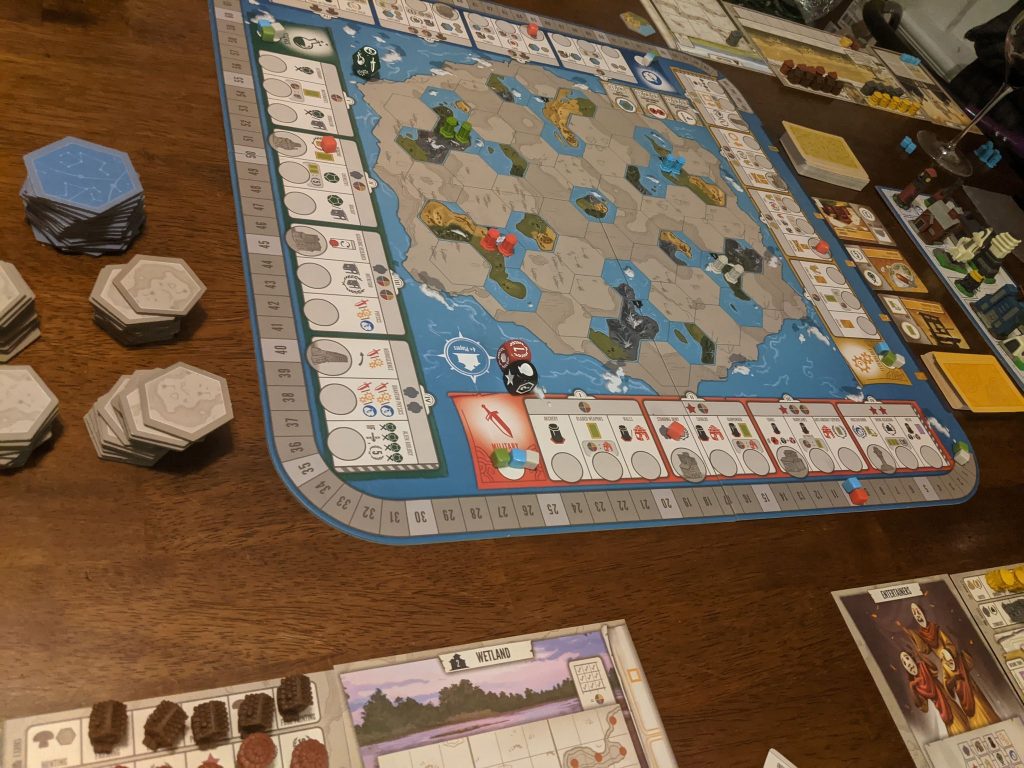
For our fourth category, we have the four advancement tracks. Your civilization may advance in either Science, Technology, Exploration, and Military. Each offers plenty of options and offers various rewards.
Now we also have a hex tile game board. It is here you’ll place land to score victory points and also have the opportunity to attack other players in hopes to conquer their tiles.
There are also victory point trackers, resource trackers, and a track to track future resources and future victory ppoints.
All in all…it’s a lot to digest. This is, of course, not to say its a bad game. It just has a lot going on. The playgroup watched a let’s play, twice, to make sure we understood all of the mechanics. The game is somewhat abstract in the way everything connects, but once you figure all of that out, it works. The game we played was a long one and, while it says 90 minutes on the box, expect your first time to go well over that.
Moving on from the gameplay itself, I have to hand it to the creators, they built some cool minis. The building design is cool as hell and, like Between two Castles, they come in their own plastic case for ease of cleanup. The game also came with a ton of bags for organizing as you see fit.
Overall, the game, while complicated, is a fun one. It’ll require more plays for me to get more out of it, but I think if you like slghtly complicated games or even Sid Meier’s Civilization, you’ll probably dig Stone Maier’s Tapestry.
-Ryan Miller


